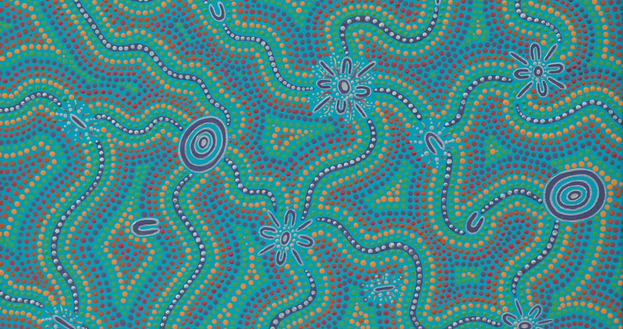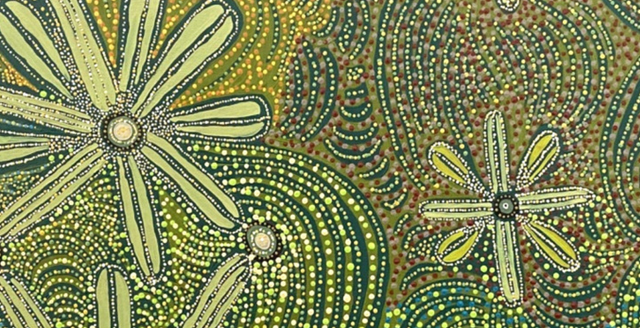|
Getting your Trinity Audio player ready...
|
Indigenous art is a special kind of artwork that tells stories and keeps traditions alive. Let’s explore why it’s important and how it’s a part of the culture of indigenous peoples around the world.

Where Indigenous Art Begins
Indigenous art has been around for a very long time. It’s a way for indigenous people to share their history and customs with others. Through colours, shapes, and patterns, they express their beliefs and tell stories.
Keeping Traditions Strong
Indigenous art helps preserve the ways of life of these communities. It’s like passing down stories from one generation to another but with colours and pictures. It reminds everyone of their rich culture.
Different Kinds of Indigenous Art
Indigenous art isn’t just one thing. It comes in many forms. Some people paint on canvases, while others make beautiful things with beads or carve wood. Each type of art tells a unique story.
Indigenous Art Today
Today’s indigenous artists use their creativity to talk about current issues like who they are, fairness, and taking care of the Earth. This makes their art meaningful to today’s world.
Supporting Communities
Many artists make a living from their art. When people buy their creations, it helps them support their families and keep their culture alive.
Colours and Symbols
Indigenous art uses special colours and symbols. Each one has a meaning. For example, blue might stand for the sky, and red could represent the Earth.
Art in Ceremonies
Art also plays a big part in ceremonies. It decorates special clothes and masks, adding a spiritual touch to important events.
Nature’s Beauty
Nature is often a big inspiration for indigenous art. You’ll see landscapes, animals, and plants in many artworks. This shows how connected indigenous people are to their environment.
Strength Through Art
But their art has helped them stay strong and show the world that they’re still here, sharing their stories.
Indigenous Art Around the World
More and more people worldwide are recognizing the importance of art. Museums and galleries now display it, so everyone can appreciate its cultural value.
How You Can Help
By learning about and supporting art, you’re not only enjoying beautiful creations but also acknowledging the challenges these communities have faced. Your support helps keep their traditions alive.
Promoting Cultural Understanding
Art provides a window into the beliefs, customs, and values of these unique cultures. It encourages people from different backgrounds to learn about and appreciate indigenous heritage.
Preserving Languages
In some indigenous communities, art is a means of showing their native languages. Artists incorporate written symbols and text into their works, helping to keep their languages alive and documented.
Fostering Pride
Indigenous art instils a sense of pride and identity in youth. When they see their culture celebrated through art, it reinforces their self-esteem and connection to their heritage.
Art as Activism
Some indigenous artists use their work to advocate for social and political causes important to their communities. Through their art, they raise awareness about issues like land rights, environmental conservation, and social justice.
Art as Healing
Art therapy is a valuable tool for healing in many communities. It provides a safe space for individuals to express their emotions and traumas, promoting mental and emotional well-being.
Art as Storytelling
Indigenous art is a form of storytelling. Each piece has a narrative behind it, offering insights into the history and experiences of indigenous peoples.
Celebrating Diversity
Art shows the incredible diversity among cultures worldwide. It’s a reminder that there is no one-size-fits-all approach to art; each community brings its own unique perspective and style.
Community Building
Art often efforts where artists come together to create artworks or host events. These activities strengthen the bonds within indigenous communities.
Art as Home Decor
Art can beautify homes and public spaces. It adds a touch of cultural richness to design and architectural elements.
Art as Cultural Tourism
Art often attracts tourists interested in experiencing and learning about cultures. This can boost local economies and promote cross-cultural understanding.
Art as a Form of Protest
Some artists use their work to protest against issues like land dispossession, and social inequalities, raising awareness of these challenges.
Art as Language Preservation
In some cases, art is a means of preserving indigenous languages by incorporating written or symbolic elements.
Art as Community Identity
Indigenous art can strengthen the identity and pride of a community, fostering a sense of belonging.
Art as Cultural Exchange
Artists often engage in cultural exchange programs, sharing their art and traditions with a global audience.
Conclusion
In conclusion, indigenous art is a colourful and powerful way to connect with the past and the future. It’s a living reminder of rich cultures and how they adapt to the world today. When we appreciate art, we celebrate the creativity and history of communities worldwide.
You may find this information useful:
Why Art Education Matters: Fostering Creativity and Skills
Painting as a Therapeutic Outlet

